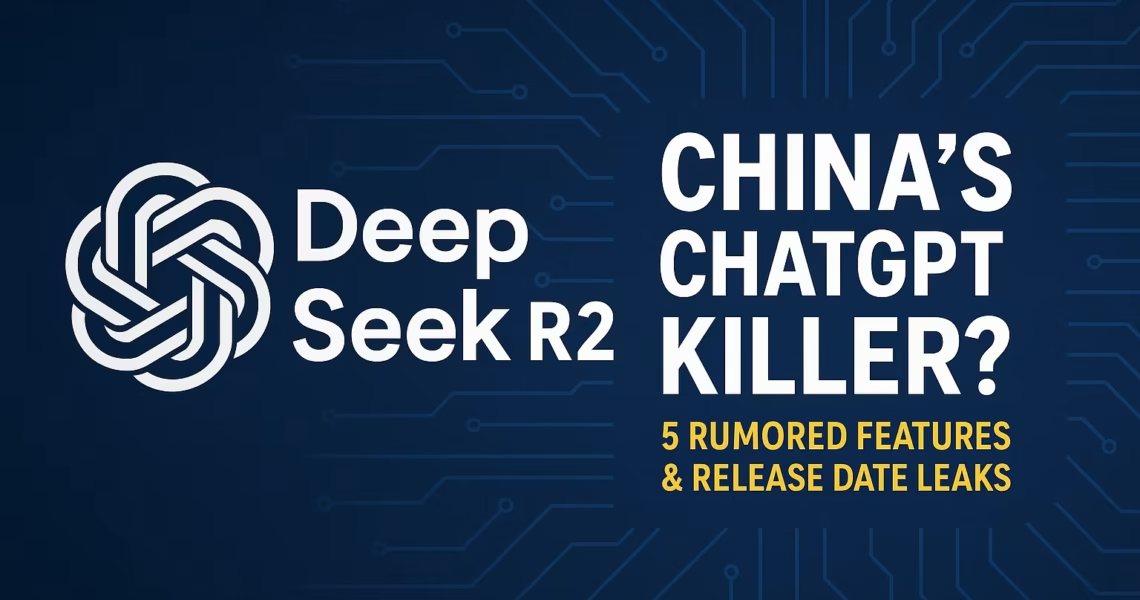DeepSeek R2: China’s ChatGPT Killer? 5 Rumored Features & Release Date Leaks
- Why DeepSeek R2 Is Making Headlines
- 1: Hybrid MoE Architecture Slashes Costs by 97.3%
- 2: Huawei Ascend Chips Challenge NVIDIA’s Dominance
- 3: “Better Vision” for Multimodal AI
- 4: 1.2 Trillion Parameters & 5.2 Petabytes of Data
- 5: Open-Source Ambitions to Rival Meta
- When Can We Expect R2?
- My Thoughts: A New Era in the AI Arms Race
Why DeepSeek R2 Is Making Headlines
Let’s cut to the chase: If you’ve been tracking the AI space, you’ve probably heard whispers about DeepSeek’s rumored “ChatGPT killer.” As someone who’s spent years analyzing tech trends, I can tell you—this isn’t just hype.
Amid the escalating US-China tech war, DeepSeek has quietly become a disruptor. Their previous models, V3 and R1, stunned experts by delivering GPT-4-level performance at a fraction of the cost. Now, the buzz around R2 suggests China might finally have an AI contender that rivals Silicon Valley’s giants. But what’s really under the hood? Let’s unpack the leaks.
1: Hybrid MoE Architecture Slashes Costs by 97.3%
Here’s the thing: Training AI models is expensive. OpenAI reportedly spent millions on GPT-4, but DeepSeek’s R2 flips the script. According to leaks on Jiuyangongshe (a Chinese stock-trading forum), R2 uses a hybrid mixture-of-experts (MoE) architecture—a game-changer for cost efficiency.
How does it work? Imagine splitting an AI model into specialized sub-networks, each handling specific tasks. This approach slashes computation costs during training and speeds up real-time performance. The result? R2 allegedly costs 97.3% less to develop than GPT-4!
2: Huawei Ascend Chips Challenge NVIDIA’s Dominance
NVIDIA’s A100 chips have long dominated AI infrastructure, but Huawei’s Ascend 910B might shake things up. Leaked social media posts claim R2 was trained on Huawei’s chips, achieving 91% of the efficiency of an NVIDIA A100 cluster.
Why does this matter? With the US restricting chip exports to China, Huawei’s tech could help Beijing sidestep sanctions. As Deedy Das from Menlo Ventures tweeted, R2 signals a “big shift away from US supply chains.”
3: “Better Vision” for Multimodal AI
R1 lacked vision capabilities, but insiders say R2 will leap ahead. One Jiuyangongshe user claimed R2 has “better vision”—likely meaning it can process images or videos alongside text. Think ChatGPT meets MidJourney, but faster and cheaper.
This could open doors for applications like medical imaging or autonomous driving. Imagine a developer in Shenzhen building a vision-powered app without burning through cloud credits. That’s the promise of R2.
4: 1.2 Trillion Parameters & 5.2 Petabytes of Data
Scale matters in AI, and R2 doesn’t hold back. With 1.2 trillion parameters (the variables that shape AI decisions) and training on 5.2 petabytes of data, this model is a beast. For context, GPT-4 reportedly has 1.7 trillion parameters—but at 97% higher cost.
The kicker? DeepSeek’s team achieved this with open-source frameworks like Hugging Face, proving you don’t need Silicon Valley’s budgets to innovate.
5: Open-Source Ambitions to Rival Meta
Meta’s Llama models currently rule open-source AI, but DeepSeek aims to dethrone them. By making R2 free to use, the startup could empower developers globally—while positioning Huawei as NVIDIA’s first real competitor.
A Reuters report notes this strategy mirrors China’s broader push for tech self-reliance. If R2 delivers, it might just spark a new wave of open-source innovation.
When Can We Expect R2?
Patience, folks! While a March Reuters article hinted at an April launch, DeepSeek remains tight-lipped. My guess? They’re timing it to maximize impact—possibly around a major tech conference.
One thing’s clear: Whenever R2 drops, it’ll send shockwaves through the AI community.
My Thoughts: A New Era in the AI Arms Race
Let’s be real—the US-China tech war isn’t cooling down. But DeepSeek’s R2 proves innovation thrives under pressure. Whether it’s the hybrid MoE design, Huawei’s chips, or the open-source playbook, this model could redefine global AI dynamics.
So, keep your eyes peeled. R2 might just be the underdog story of 2025.
